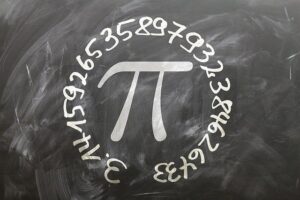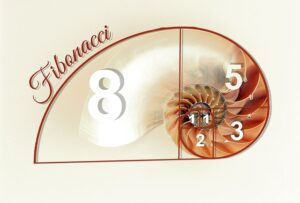
Numbers were invented so that humanity could have a way to count things. There are many functions to numbers, from being able to do the math to counting objects in the world.
The earliest known numbers come from the Middle East, around 10,000 BC.
The words we use for numbers were derived from Latin and Greek, and most likely came from the Egyptians.
Numbers have been changed over time to cope with new mathematics, making them more efficient at representing things in our world.
In Western Europe, until the 14th-century mathematicians didn’t understand how to properly multiply or divide numbers, and this was a problem for alchemists and astronomers.
The number zero was invented in India, around the 5th century AD, making it the first to be used widely throughout the world.
When did humans start using numbers?
It is very likely that humans have been using numbers for a long time, before the rise of civilization in Mesopotamia around 10,000 BC.
The earliest numerical writing consisted of notations in clay tablets found in the ruins of the city Uruk from around 3100 to 2900 BC.
The modern numerals used today were created in India in the late 6th century AD.
The number 0, though it was likely known before this time, first appeared as a written symbol for the digit in Brahmagupta’s book Brahmasphutasiddhanta published in 628 AD which describes rules for writing numbers and operations on them.
The earliest numerals did not look like the ones we use today. They were more like marks (pictograms) that represented how many objects were in a collection, and they did not include a symbol for 0.
This is very important because it set up the way to represent numbers without the need of having every object in front of you: you had some symbols and all you had to do was count.
A major part in the history of numbers is found when zero becomes an important number, which happened in India around the 9th century AD.
The reason why this was so relevant is that it allowed for fractions to be written better with modern notation, and it made calculations much easier than before because you could subtract a large number from another without a marker.
What is the oldest number system?
The oldest number system is likely the one found on Mesopotamian clay tablets dating back to around 3100 BC.
These numbers are not very advanced, but they are used in many parts of the world today because of how easy it is to write fractions with them.
This is a sequence of numbers that are represented by adding up the two numbers before it. It is known as a sequence because there are many numbers after 0, 1, 1, 2, 3, 5, etc., and they go on forever.
What is the Fibonacci sequence?

In Europe, complex math could not be done until Fibonacci discovered using Arabic numbers (1-9, plus 0) helped with mathematical equations.
Math in Europe had some difficulty because they were restricted to Roman numerals, which were not suitable for complex math (such as subtracting one large number from another without using a marker).
The reason the Fibonacci Sequence is useful with complex math is it represents numbers better than Roman numerals. For example, if you wanted to multiply 124 by 35, Roman numerals would require you to do 5+4=9, 9+3=12, 12+2=14.
The only problem is that the Romans didn’t use a symbol for zero, meaning multiplication and division can be done with ease in Fibonacci sequences.
In Europe around the 14th century, major changes were made to mathematics because of the invention of zero, allowing new equations to be done.
People saw new patterns in math and many things could now be properly calculated with numbers, such as astronomy being much easier by being able to calculate orbits.
In India around the 9th century, the number system was changed from words for numbers to place-value digits, which were very useful because of its place-value system.
The reason why this was so important is that it allowed for numbers to be written in different number bases, making fractions much more efficient at being written.
Until the invention of the Hindu-Arabic numeral system, there was no easy way of writing fractions with current notation, which meant they were hard to do in most places.
How did numbers evolve?
A major part in the history of numbers is found when zero becomes an important number, which happened in India around the 9th century AD.
The reason why this was so relevant is that it allowed for fractions to be written better with modern notation, and it made calculations much easier than before because you could subtract a large number from another without a marker.
In Europe around the 14th century, major changes were made to mathematics because of the invention of zero, allowing new equations to be done.
People saw new patterns in math and many things could now be properly calculated with numbers, such as astronomy being much easier by being able to calculate orbits.
The earliest number system was likely found on Mesopotamian clay tablets dating back to around 3100 BC.
These numbers are not very advanced, but they are used in many parts of the world today because of how easy it is to write fractions with them.
In India around the 9th century, the number system was changed from words for numbers to place-value digits, which were very useful because of its place-value system.
The reason why this was so important is that it allowed for numbers to be written in different number bases, making fractions much more efficient at being written.
- Related post: The History Of Vehicle License Plates
- Related post: Explanation of when and how electricity was invented
Conclusion
The history of numbers and the way they evolved is very important in understanding how we can do complex math with ease. Without Fibonacci sequences, for example, we would not be able to multiply 124 by 35 without writing it out on paper.
Math is important today because of all the things it can calculate, such as designing buildings or letting us understand how the world works.
The history of numbers has advanced our understanding of mathematics by adding sophistication to math equations and allowing for fractions to be efficient.
For thousands of years, people have been using different methods to represent numbers in numerical form. The Hindu-Arabic numeral system is a numerical representation system that has been in use since the 9th century and remains to be used today.
The Hindu-Arabic numeral system was invented in India and improved in Europe in the Middle Ages, allowing for easier calculations and fractions to be done with ease.
Without these advancements in the Hindu-Arabic numeral system, arithmetic as we know it would not be possible.
In the 9th century AD, a major advancement to numerical representation began with the invention of the Hindu-Arabic numerals in India and its subsequent refinement in Europe by 1202.
The reason for this is that it allowed for numbers to be written in different number bases, making fractions much more efficient at being written.



